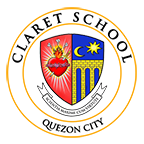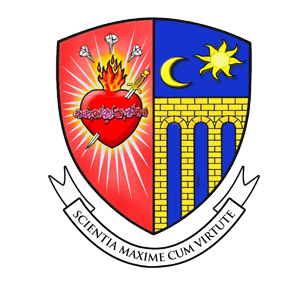 Alay Claretiano sa Pasko 2025: A Celebration of Love and...
Alay Claretiano sa Pasko 2025: A Celebration of Love and...
Created on Wednesday, 07 January 2026 09:04
 United as One Claretian Community: ACSPI Holds its Youth Camp...
United as One Claretian Community: ACSPI Holds its Youth Camp...
Created on Monday, 22 December 2025 14:48
 Claret School of Quezon City Conducts an Open House Activity...
Claret School of Quezon City Conducts an Open House Activity...
Created on Monday, 22 December 2025 10:18
 Claretian Wins Multiple Awards at the Minoan Robotsports Competition
Claretian Wins Multiple Awards at the Minoan Robotsports Competition
Created on Thursday, 18 December 2025 09:07
 Claretians Dominate the AI (Artificial Intelligence) Super Track ZMRobo
Claretians Dominate the AI (Artificial Intelligence) Super Track ZMRobo
Created on Wednesday, 17 December 2025 13:40
 Kampanya Para sa Sustainable Development, Isinulong ng Ikaapat na Baytang...
Kampanya Para sa Sustainable Development, Isinulong ng Ikaapat na Baytang...
Created on Wednesday, 17 December 2025 13:18
 Senior High School Claretians Grab Bronze in Solara Case Competition...
Senior High School Claretians Grab Bronze in Solara Case Competition...
Created on Monday, 15 December 2025 10:11
 Claretian Students Achieve Back-to-Back National Championships at the 2025 ROBOLUTION...
Claretian Students Achieve Back-to-Back National Championships at the 2025 ROBOLUTION...
Created on Monday, 15 December 2025 09:45
 Claretian Students Receive Jesus in First Holy Communion
Claretian Students Receive Jesus in First Holy Communion
Created on Thursday, 11 December 2025 15:00
 Claretian Student Joaquim Dator Ranks 9th in Nationwide PAMES–CASIO Math...
Claretian Student Joaquim Dator Ranks 9th in Nationwide PAMES–CASIO Math...
Created on Thursday, 11 December 2025 14:42
 CSQC School Director Leads the Blessing of the Sports Development...
CSQC School Director Leads the Blessing of the Sports Development...
Created on Wednesday, 10 December 2025 16:19
 Claretian Student Excels in Little Math Wizard Competition
Claretian Student Excels in Little Math Wizard Competition
Created on Tuesday, 02 December 2025 07:38
 Claretian Students Triumph in the 2025 ROBOLUTION Regional EroMath Competition...
Claretian Students Triumph in the 2025 ROBOLUTION Regional EroMath Competition...
Created on Monday, 01 December 2025 15:11
 Young Claretians Excel at the eROBOLUTION Dubai 2025: Global Olympiad...
Young Claretians Excel at the eROBOLUTION Dubai 2025: Global Olympiad...
Created on Wednesday, 19 November 2025 14:33
 Grades 1–3 November Cluster Assembly: A Celebration of Knowledge and...
Grades 1–3 November Cluster Assembly: A Celebration of Knowledge and...
Created on Wednesday, 19 November 2025 13:25
 CSQC Grade 10 PTA successfully hosts block screening of “Quezon”...
CSQC Grade 10 PTA successfully hosts block screening of “Quezon”...
Created on Tuesday, 18 November 2025 08:48
 A Grade 6 Claretian achieves 1st Place at the E-ROBOLUTION...
A Grade 6 Claretian achieves 1st Place at the E-ROBOLUTION...
Created on Thursday, 13 November 2025 15:05
 CSQC Conducts Successful Earthquake Drill with Community Partners
CSQC Conducts Successful Earthquake Drill with Community Partners
Created on Sunday, 09 November 2025 16:18











